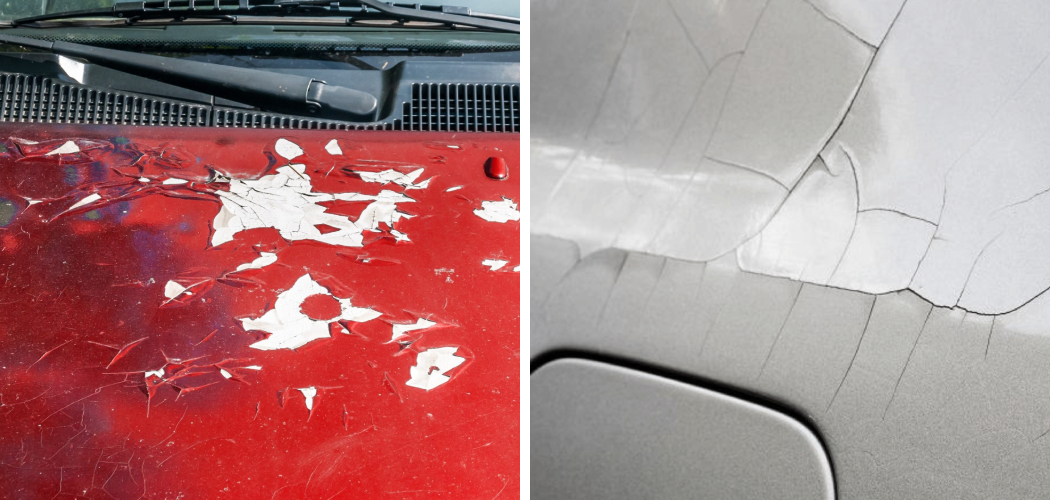Cracked car paint can be a great annoyance to any vehicle owner. Not only does it detract from the aesthetics of your car, but it can also lead to further damage if not addressed promptly. Understanding how to fix cracked car paint is crucial to maintaining the value and integrity of your vehicle. In the sections to follow, we will guide you through the necessary steps to diagnose, prepare, and repair cracked paint, helping you restore your car’s finish to its former glory. Whether you’re dealing with a few unsightly fissures or extensive paint damage, this guide aims to empower every car enthusiast with the knowledge to tackle the problem head-on.
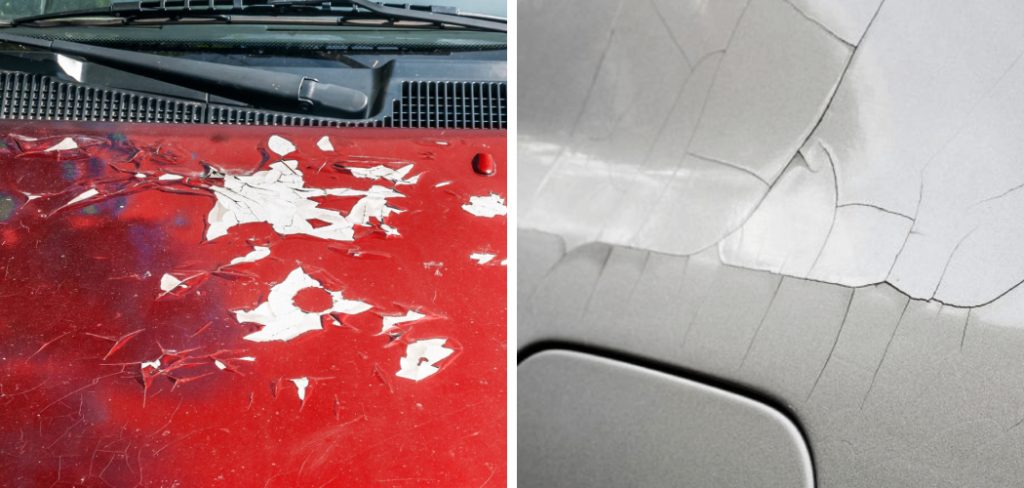
Understanding Cracked Car Paint: Causes and Types
Before diving into the repair process, it’s essential to understand what causes cracked car paint. The most common culprits are exposure to harsh elements such as sunlight, extreme temperatures, salt, and pollutants. These factors can cause the paint to expand and contract, leading to cracks over time. Another common cause of cracked paint is physical damage from collisions or scratches. It’s crucial to identify the type of crack you’re dealing with as it will determine the appropriate repair method.
Types of Cracked Car Paint
Surface Scratches:
These are shallow, thin lines on the surface of the paint and can usually be buffed out easily.
Spiderweb Cracks:
These are small, interconnected fissures that resemble a spider’s web and are often caused by physical damage.
Deep Cracks:
These are more severe cracks that penetrate through the layers of paint and require more extensive repair.
Why Fixing Cracked Car Paint is Important?
Ignoring cracked car paint can lead to further damage, as moisture and dirt can seep into the cracks and cause rusting. Additionally, the longer you leave the damage unaddressed, the more expensive and time-consuming it will be to fix in the long run. Repairing cracked car paint not only improves the appearance of your vehicle but also protects it from potential damage.
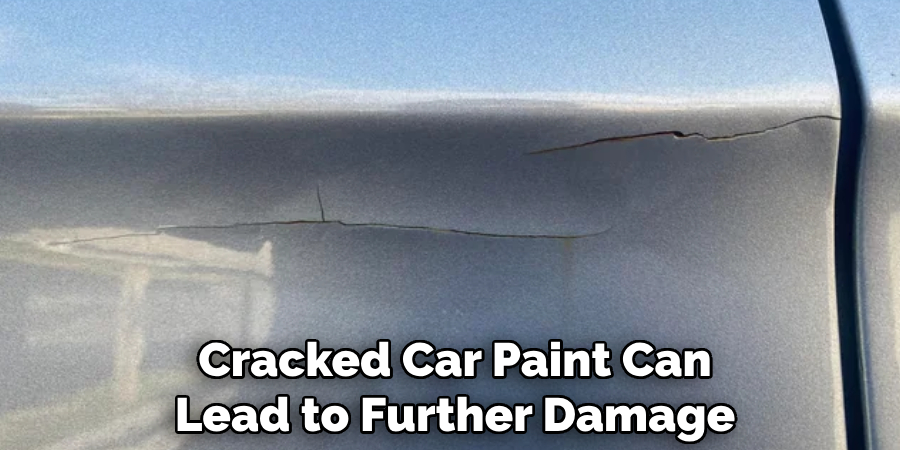
If you plan on selling your car in the future, fixing cracked paint can help maintain its value and make it more desirable to potential buyers. The good news is with the right tools and techniques, fixing cracked car paint can be an easy and affordable DIY project. The following steps will guide you through the process.
10 Step-by-step Guidelines on How to Fix Cracked Car Paint
Step 1: Gather the Necessary Tools and Materials
To fix cracked car paint, you’ll need the following:
Sandpaper (2000-grit)
This will be used to smooth out the surface of the paint.
Masking tape
This will help protect surrounding areas from accidental damage during the repair process.
Primer
This will provide a smooth base for the new coat of paint to adhere to. Choose one that is compatible with your car’s paint color and type.
Touch-up paint
You can purchase this directly from your car’s manufacturer or have it custom-mixed at an auto body shop.
Clear coat
This is the final layer of paint that will protect and give your car a glossy finish.
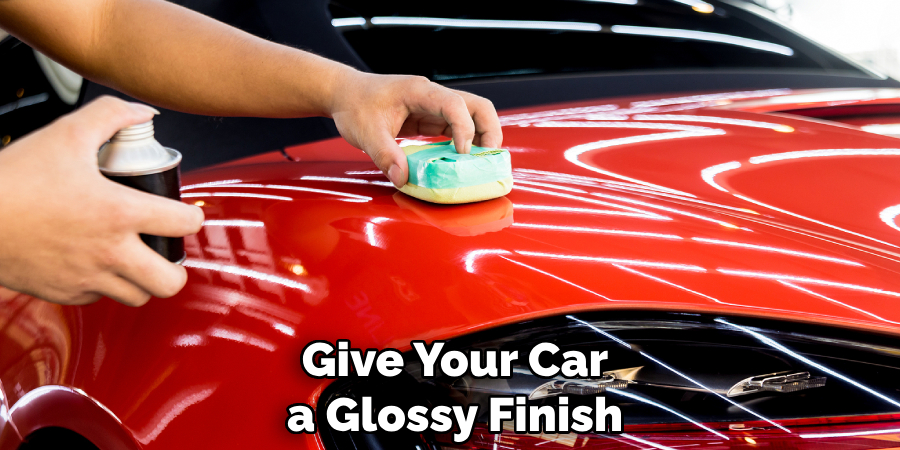
Microfiber cloth
This will be used to clean the surface of the car before painting.
Paintbrush or airbrush
Choose one depending on the size of the area needing repair.
Step 2: Clean and Prepare the Surface
Using a microfiber cloth, thoroughly clean the cracked area to remove any dirt, wax, or debris. This will ensure that the paint adheres properly. The area should be completely dry before moving on to the next step. You may also use a degreaser for deeper cleaning if needed. It’s essential to have a clean and smooth surface for the best results. But be careful not to scrub too hard, as this can cause further damage. The surrounding area should also be protected with masking tape to avoid any accidental spills or splatters.
Step 3: Sand the Affected Area
Using the 2000-grit sandpaper, gently sand down the edges of the cracked area until the surface is smooth. This will help remove any loose paint and create a clean surface for the new paint to adhere to. Be sure not to sand too aggressively, as this can damage the underlying layers of paint. The goal is to feather the edges of the crack and create a smooth transition between the damaged and undamaged areas. You may also use a sanding block for more precise and even sanding. It’s recommended to use a spray bottle filled with water to keep the surface moist while sanding.
Step 4: Apply Primer
Before applying any paint, it’s essential to prime the surface. This will help the new coat of paint adhere better and prevent future cracking. Be sure to choose a primer that is compatible with your car’s paint type and color. Follow the instructions on the primer for the correct application method. Generally, it’s recommended to apply 2-3 thin coats of primer, allowing each coat to dry completely before moving on to the next. The primer should also be sanded lightly with fine-grit sandpaper before proceeding. If you’re unsure about the primer to use, consult a professional or your car’s manufacturer.
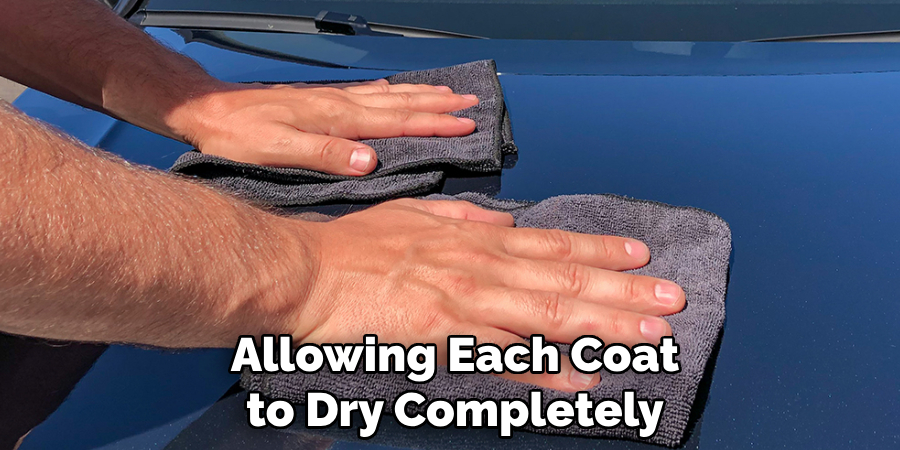
Step 5: Apply Touch-up Paint
Once the primer has dried, it’s time to apply the touch-up paint. If you purchased a ready-mixed touch-up paint, simply follow the instructions for application provided by the manufacturer. If you had it custom-mixed, make sure to stir the paint well before applying. Using a small brush or an airbrush, apply thin coats of paint, allowing each coat to dry completely before adding the next. It’s essential to match the color and texture of the surrounding area for a seamless finish.
Step 6: Let The Paint Dry Completely
It’s crucial to let the paint dry completely before proceeding to the next step. This can take anywhere from a few hours to a full day, depending on the type of paint used and environmental conditions. Be sure not to touch or disturb the painted area during this time. But if you notice any unevenness or bumps, lightly sand with fine-grit sandpaper and reapply the touch-up paint. The goal is to achieve a smooth and even surface.
Step 7: Apply Clear Coat
Once the touch-up paint has dried completely, it’s time to apply the clear coat. This will add shine and provide protection to the repaired area. Again, follow the instructions provided by the manufacturer for application. Generally, it’s recommended to apply 2-3 thin coats of clear coat, allowing each coat to dry completely before adding the next. It’s crucial to avoid any drips or runs during this process for a smooth and glossy finish. The clear coat should also be sanded lightly with fine-grit sandpaper before proceeding. It’s recommended to let the clear coat dry for at least 24 hours before touching or washing your car.
Step 8: Let The Clear Coat Dry
Similar to the touch-up paint, it’s crucial to let the clear coat dry completely before proceeding. This can take anywhere from a few hours to a full day, depending on environmental conditions. Be sure not to touch or disturb the painted area during this time. If you notice any unevenness or bumps, lightly sand with a fine-grit sandpaper and reapply the clear coat. You can also use a rubbing compound to buff out any imperfections.
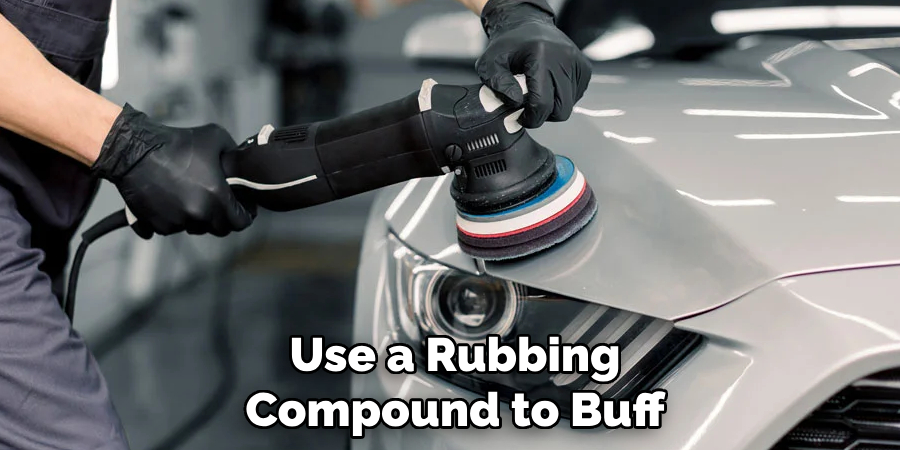
Step 9: Buff and Polish
To achieve a professional-looking finish, it’s recommended to buff and polish the repaired area once the clear coat has completely dried. This will help blend the repaired area with the surrounding paint and give your car a glossy finish. You can use a buffing machine or do it by hand using a soft cloth and polish. Although this step is optional, it can make a significant difference in the overall appearance of your car’s paint job. It’s also recommended to wax your car afterward for added protection and shine.
Step 10: Let The Car Cure
It’s essential to let your car cure for at least a week before washing or waxing it after the touch-up paint job. This will allow the paint to fully adhere and harden, providing a long-lasting repair. Avoid harsh chemicals or abrasive cleaners during this time. Once the car has cured, you can wash and wax it as usual. Congratulations, you have successfully repaired your car’s paint job! Regularly inspect and maintain your car’s paint to prevent any future cracks or damages. And if the damage is severe or beyond your skill level, don’t hesitate to seek professional help for a perfect repair. Happy painting!
Following these steps on how to fix cracked car paint can help you successfully repair your car’s paint job and achieve a seamless finish. But it’s also essential to maintain and protect your car’s paint to prevent future damage. Regularly washing and waxing your car, as well as avoiding harsh chemicals can help preserve the paint’s integrity. If you notice any new cracks or damage, address them promptly before they worsen.
Do You Need to Hire Professionals?
While fixing cracked car paint can be done at home with the right tools and materials, some cases may require professional help. If the damage is extensive or if you are not confident in your skills, it’s best to consult a professional. They have the expertise and experience to handle more severe damages and ensure a perfect repair. Additionally, if your car’s paint color is hard to match or if the damage is in a highly visible area, it’s best to leave it to the professionals for a flawless finish.
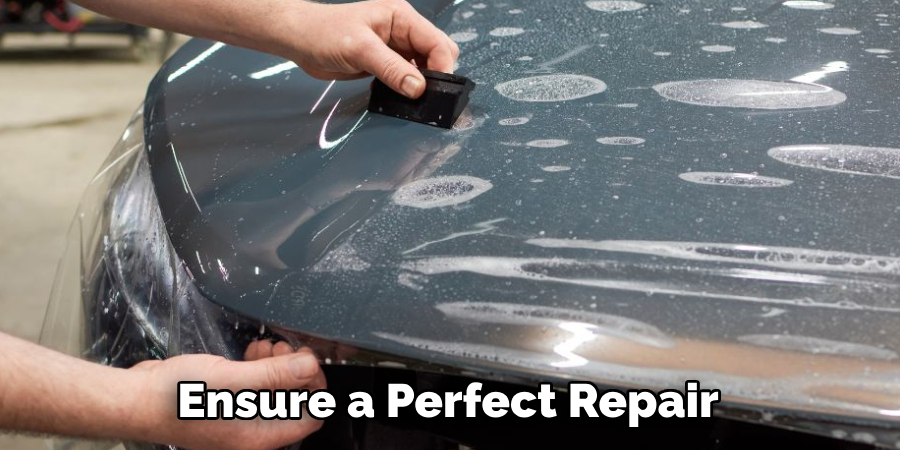
In conclusion, repairing cracked car paint may seem daunting, but with the right steps and tools, it can be done at home. Remember to properly prepare the surface, choose the right products, and take your time during each step for the best results. And if you’re unsure or overwhelmed, don’t hesitate to seek professional help for a perfect repair. With proper care and maintenance, your car’s paint can last for years to come and keep your vehicle looking its best. So go ahead and tackle that cracked paint job with confidence!
How Much Could It Cost?
The cost of repairing cracked car paint at home can vary depending on the extent of the damage and the products used. Generally, ready-mixed touch-up paints can range from $10 to $20, while custom-mixed paints can cost up to $50 or more. Clear coat and other materials such as sandpaper and polishing compound can also add to the overall cost. If hiring professionals, the cost can range from $50 to $300, depending on the severity of the damage and the location.
It’s always best to consult with a professional for an accurate estimate based on your specific situation. However, keep in mind that repairing cracked paint early can save you from more extensive and expensive repairs in the future. It’s also a worthwhile investment to maintain the value and appearance of your car. So don’t delay. Take care of those cracks as soon as possible!
Tips and Techniques for Success
- Always Follow the Instructions Provided by the Manufacturer for the Application of Primer, Touch-up Paint, and Clear Coat.
- It’s Essential to Match the Color and Texture of the Surrounding Area for a Seamless Finish.
- Use Fine-grit Sandpaper and Sand Lightly Between Coats for a Smooth Surface.
- Let Each Coat Dry Completely Before Adding the Next to Prevent Drips or Runs.
- Buff and Polish the Repaired Area for a Professional-looking Finish.
- Allow Your Car to Cure for at Least a Week Before Washing or Waxing It After the Touch-up Paint Job.
- Regularly Inspect and Maintain Your Car’s Paint for Any Damages to Prevent Future Cracks.
- Seek Professional Help if the Damage is Severe or Beyond Your Skill Level.
- Don’t Forget to Protect Your Car’s Paint by Regularly Washing and Waxing It, as Well as Avoiding Harsh Chemicals.
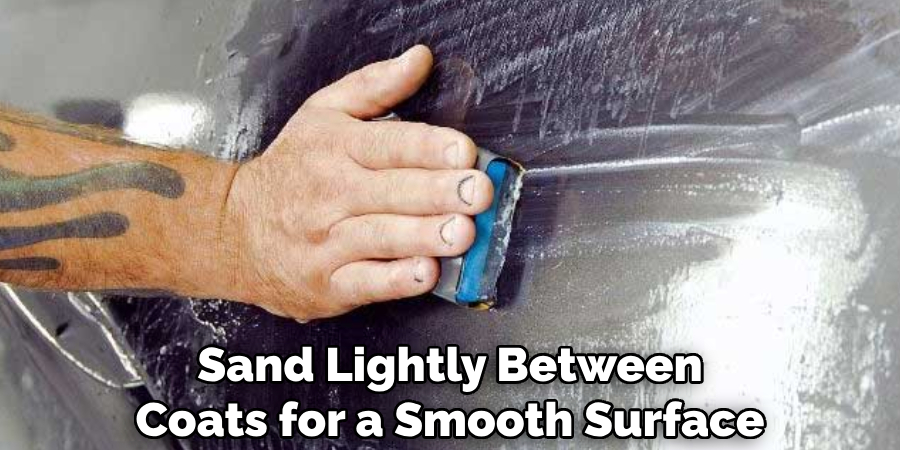
Remember, practice makes perfect when it comes to touch-up painting. Don’t be discouraged if your first attempt doesn’t turn out perfectly. With time and patience, you’ll be able to achieve a flawless paint job. Happy painting!
Prevention and Maintenance
- Avoid Harsh Chemicals and Abrasive Cleaners on Your Car’s Paint.
- Regularly Wash and Wax Your Car to Protect the Paint’s Integrity.
- Address Any New Cracks or Damage Promptly Before They Worsen.
- Inspect Your Car’s Paint Regularly to Catch Any Issues Early On.
- Seek Professional Help for Severe Damage or Beyond Your Skill Level.
- Touch-up Paint Regularly to Maintain a Seamless Finish.
- Protect Your Car’s Paint by Parking in Shaded Areas and Using Car Covers When Possible.
- Use Automotive-specific Products for Cleaning and Maintaining Your Car’s Paint.
Remember, prevention is better than cure when it comes to maintaining your car’s paint. By following these tips and techniques, you can keep your car’s paint looking like new for years to come. Regular touch-up paint and maintenance are crucial in protecting your investment and preserving the appearance of your vehicle. So, don’t neglect it!
Frequently Asked Questions
Q: How Do I Know if the Damage is Severe or Beyond My Skill Level to Repair?
A: If the cracks are deep or extensive, it’s best to seek professional help for an expert repair. Attempting to fix severe damage yourself may result in further complications and a less-than-desirable outcome.
Q: What if My Car’s Paint is Customized or Unique?
A: It’s recommended to consult a professional, such as your car’s manufacturer or a body shop specializing in custom paint jobs, for guidance on choosing and applying touch-up paint. They can also provide advice on proper care and maintenance for your car’s specific paint type.
Q: Can I Use This Method to Repair Scratches or Chips?
A: Yes, you can use this method to repair small scratches and chips as well. Just follow the same steps, but make sure to clean and sand the area beforehand for a better result.
Q: How Often Should I Inspect My Car’s Paint?
A: It’s best to inspect your car’s paint at least once a month for any new cracks or damages. Regularly washing and waxing your car can also help you notice any changes or imperfections in the paint job.
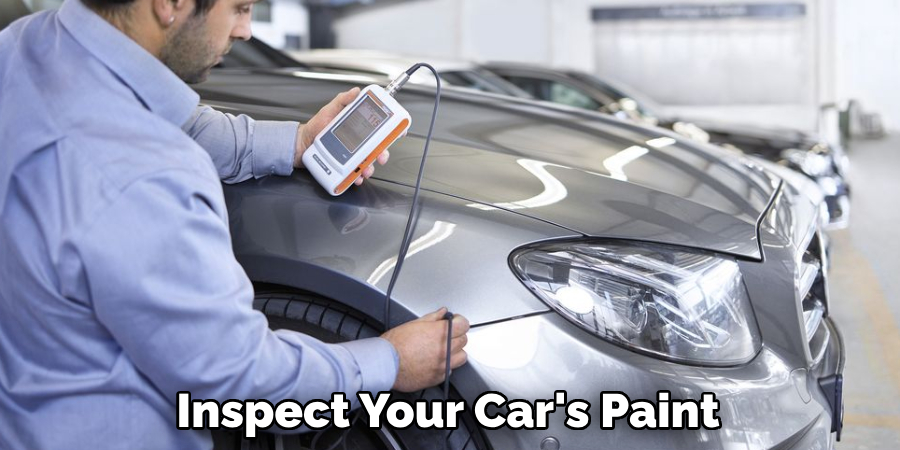
Q: How Long Does a Touch-Up Paint Job Last?
A: A touch-up paint job can last for several years if properly applied and maintained. Regularly inspecting and taking care of your car’s paint can also help prolong its lifespan. So, it is essential to take proper care of your car’s paint job to keep it looking great for as long as possible.
Conclusion
In conclusion, tackling the issue of cracked car paint requires attention to detail, the right tools, and a bit of patience. Whether you choose to handle the repair yourself or take your vehicle to a professional, understanding the steps involved can ensure that your car’s appearance is restored to its original glory. Remember, maintaining the integrity of your car’s paint not only boosts its aesthetic appeal but also serves as a protective barrier against rust and damage, safeguarding your vehicle’s value and longevity. Thanks for reading this article on how to fix cracked car paint.

